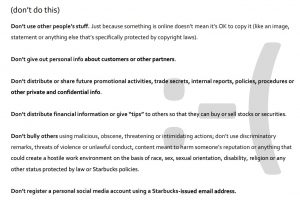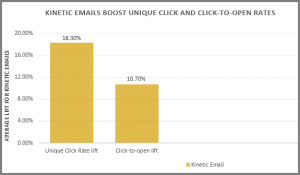By Bill Faeth, Published November 10, 2014
17 Commonly Misunderstood Marketing Terms

CTR. Algorithm. MQL. Are you feeling confused yet?
The world of inbound marketing is rapidly changing, and some pretty confusing terminology has popped up along with it.
If you’re wondering whether marketers should really understand all of the latest acronyms and terminologies, they definitely should. Not only will it give you the power to seem smarter, keeping an up-to-date professional body of knowledge is crucial for staying abreast of the latest advances in SEO, web, and content marketing best practices.
Here are 17 terms that are often misused, and even more often misunderstood:
- SERPs As strange as it may sound when spoken out loud, SERPs is simply an acronym for search engine results page. When a consumer types a query into Google, Bing, or another search engine of their choice, the links and meta descriptions that appear in the results are often called SERPs.
- SEO Search engine optimization is the dynamic practice of optimizing your website to rank well in SERPs. It’s a rapidly-changing field of practice which has evolved significantly over the past few years as major search engines update their algorithms to best meet consumers’ need for quality content.
- MQL Marketing qualified leads are more likely to become customers once they’re passed to your sales team. By analyzing the data of your existing customers, you can adjust your lead generation and nurturing strategy to capture the best-qualified prospects possible. Alternatively, MQL can stand for metaweb query language, which highly technical marketers can use to perform data mining actions on Freebase.
- SQL Sales qualified leads have been designated by your organization’s sales team as being worthy of further communication. Creating transparency between sales and marketing teams when it comes to lead qualification factors can help marketers generate the best possible leads. In the technical realm, the structured query language is a common way marketers can query relational database management systems (commonly abbreviated as RDBMS).
- XML One of the most-hyped web technologies, extensible markup language is a way of adding tags to written content in order to ease transmission and display in web browsers. HTML is the basic language of the web, while XML is it’s more sophisticated cousin.
- SLA Service level agreements are a contract between a service provider and their client. Marketers often have SLAs in place with their web hosting and marketing software providers. SLAs typically set guidelines availability, speed, and other service attributes.
- Blog The term “weblog” was first coined in 1997, 3 years after the first dynamic website was created. It was a few more years before dynamic content management systems were created that allowed non-technical types to publish frequent content updates to the web. As I’m sure you know, the term since been shortened to “blog,” and “weblog” is pretty much only used ironically these days.
- Vlog The term for video blogs (or video weblogs if you’re in the mood to be a little fancy) was first included in the Merriam-Webster dictionary in 2009. It can be used to describe blog content on a website that includes video or stand-alone videos hosted on YouTube, Vimeo, or other sites.
- CTR Click-through rate is a catch-all phrase for viewer-to-click conversions commonly used to measure the success emails or call-to-action buttons on a website. A/B testing is one of several methodologies that can improve click-through rates.
- Bounce Rate Google defines bounce rate as your website’s percentage of “single page sessions.” In other words, it’s the visitors who read a single blog or view your homepage, but don’t do anything else on your site. Reducing bounce rate is crucial for positive SEO and improved conversions.
- Remarketing Content remarketing is the idea of “tagging your site visitors and targeting them with content after they leave your website,” with an end goal of converting one-time visitors into loyal customers. It may sound a little creepy, but it can be a powerfully effective to build relationships when done right.
- SMarketing Smart marketing? Nope. Sales and marketing alignment. This marketing practice forces sales and marketing teams to work collaboratively, and creates better continuity for leads during their buyers’ journey.
- Split Testing Also known as A/B testing. This process is a randomized experiment to test two variables’ relative performance. In simpler terms, it’s a method to control for optimal performance among web page layouts, calls-to-action, emails, and other marketing elements. While it may sound complicated, with the right marketing software it isn’t.
- Webinar This term is a portmanteau of the words “web” and “seminar,” and falls under the umbrella of content marketing. Organizations can provide real-time, interactive screencasts to prospects and customers, which may be recorded and replayed at a later date.
- Robots.txt Robots.txt files allow website owners to communicate directly with search engine bots, by communicating which web pages should and should not be indexed in search. These files are commonly used by technical SEO professionals.
- Permission Marketing First coined by marketing legend Seth Guru in 2008, permission marketing is closely tied with inbound marketing. It’s the idea of communicating to consumers with their permission, instead of broadcasting marketing messages.
- Algorith Algorithms are complex sets of instructions, used to guide computers in achieving results. All major search engines have algorithms, which are closely-guarded trade secrets, and may be updated hundreds of times each year.
What are some of the marketing acronyms and terms you commonly confuse? Share your favorites in the comments!
[Photo credit: kurichan+ via photopin cc]
Business Articles | Business 2 Community
(503)
Report Post







